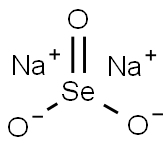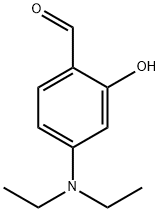Selenious acid
Synonym(s):Selenious acid
- CAS NO.:7783-00-8
- Empirical Formula: H2O3Se
- Molecular Weight: 128.97
- MDL number: MFCD00134090
- EINECS: 231-974-7
- Update Date: 2025-01-27 09:38:02

What is Selenious acid?
Absorption
The absorption of selenite following oral administration approximately 40-70% of an oral dose, based on studies done in humans .
Selenoprotein P, the plasma form of selenium, contains at least 40% of the total selenium in plasma . Deletion of the gene for selenoprotein P in mouse models alters the distribution of selenium in body tissues suggesting that selenoprotein P is necessary for selenium transport .
Toxicity
The toxicity of selenium has been consistently well documented. However, some early studies reported that selenium may be a carcinogen. Nelson et al. (1943) showed that rats fed diets containing Se as seleniferous wheat developed hepatic tumors and low-grade carcinomas in 11 out 53 study animals .
Selenium at high doses (15-30 mcg/egg) has been reported to have significant adverse embryological effects on developing chickens. There currently no adequate and well-controlled studies in pregnant women. Selenious acid injections should be used during pregnancy only when the potential benefits justify the potential risk to the growing fetus .
The presence of selenium in the placenta and the umbilical cord blood has been reported in humans .
Overdosage symptoms with selenious acid include:
Acute
Brick red–color gastric mucosa, cerebral edema, coma, death, fulminating peripheral vascular collapse, garlic or sour breath odor, gastrointestinal disturbance, hemolysis, hypersalivation, internal vascular congestion, liver necrosis, muscle spasms, pulmonary edema, and restlessness .
Chronic
Dental defects, dermatitis, garlic odor of breath and/or sweat, gastrointestinal disorders, hair loss, mental depression, metallic taste, nervousness, nausea, vomiting, weak nails .
Description
Selenious acid is a colourless, deliquescent crystal in appearance. It decomposes on heating,
producing water and toxic fumes of selenium oxides.
It is incompatible with strong reducing agents, organic materials, and finely powdered
metals and reacts on contact with acids producing toxic gaseous hydrogen selenide.
Selenious acid is a non-combustible chemical. On fire/burning, it emits irritating or toxic
fumes (or gases).
The major use of selenious acid is in changing the colour of steel, especially the steel in
guns from silver grey to blue grey. It is also used for the chemical darkening and patination
of copper brass and bronze, producing a rich dark-brown colour that can be further
enhanced with mechanical abrasion.
Chemical properties
White solid
Chemical properties
Selenious acid is a colorless, crystalline solid.
The Uses of Selenious acid
As a reagent for alkaloids; as oxidizing agent.
The Uses of Selenious acid
As an oxidizing agent, as a reagent for alkaloidsSelenous acid is used in steel guns, wherein it changes the color of the steel from silver-grey to blue-grey. It serves as an important component of the Mecke reagent, which is utilized for drug testing. It acts as a source of selenium. It acts as a reagent for alkaloids and an oxidizing agent. Further, it is used in labeling radiopharmaceuticals. It is involved in the organic synthesis for the preparation of glyoxal.
Indications
Selenium injection is indicated for use as a supplement to intravenous solutions given for total parenteral nutrition (TPN). Administration of selenious acid in TPN formulas helps to maintain plasma selenium levels and also to maintain endogenous stores to prevent deficiency .
Selenium compounds, such as selenium sulfide, are used topically in anti-dandruff shampoos and in cases of seborrhea .
For the purpose of brevity, selenite will the focus of discussion, and more information about selenium can be obtained at Selenium.
What are the applications of Application
Selenous acid is the principal oxoacid of selenium, working as an oxidizing reagent for alkaloids.
Background
Selenious acid is the acid form of sodium selenite, a form of selenium .
Selenium is an essential trace element and antioxidant. It is a cofactor metabolic enzyme regulation. It also plays an important role in maintaining the general health of tissue and muscle and has antioxidant properties. Selenium is a component of glutathione peroxidase enzyme, which protects cell components from oxidative damage due to peroxides produced during cellular metabolism .
Selenium (Se) has been demonstrated to prevent cancer in numerous animal models when administered selenium at levels exceeding the nutritional requirements. One study showed efficacy in the prevention of malignancy while utilizing a selenium supplement in humans. The reports from such studies have heightened the interest in additional human selenium supplementation studies to validate the results in larger populations .
Interestingly, selenium is being studied as a potential therapy in the prevention or management of atherosclerosis .
Definition
ChEBI: Selenous acid is a selenium oxoacid. It is a conjugate acid of a hydrogenselenite.
General Description
Colorless solid, transparent, colorless crystals. Used as a reagent for alkaloids and as an oxidizing agent. Isotope is used in labeling radiopharmaceuticals.
Reactivity Profile
Selenious acid decomposes when heated to toxic and volatile selenium dioxide. Serves as an oxidizing agent. Reacts exothermically with many reducing agents including hydroiodic acid, sulfurous acid, sodium hyposulfite, hydroxylamine salts, hydrazine salts, hypophosphorous acid, phosphorous acid [Merck]. Oxidizes many organic substances. Is oxidized to selenic acid by strong oxidizing agents.
Hazard
Toxic by inhalation, ingestion, and skin absorption.
Health Hazard
Selenious acid and its salts are capable of penetrating the skin and can produce acute poisonings. Causes irritations and burns of the skin. It is highly toxic orally. Inorganic selenium compounds may cause dermatitis.
Fire Hazard
When heated to decomposition Selenious acid emits toxic fumes of selenium. Avoid heating.
Pharmacokinetics
Selenium is a component glutathione peroxidase, which protects cells from oxidative damage caused by peroxidases produced during cellular metabolism .
Selenium is needed to maintain the circulatory system. It also keeps the heart muscle and skin tissue healthy. It may also help in the prevention of cancer due to its stimulation of antioxidant activity and protection of cell membranes , .
Selenious acid preserves vitamin E, which improves the cell's antioxidant defense, and plays an important role in the structure of teeth .
Prolonged TPN (total parenteral nutrition) support in humans has resulted in selenium deficiency symptoms which include muscle pain and tenderness. The symptoms have been reported to respond to supplementation of TPN solutions with selenium Selenium, .
Pediatric conditions, Keshan disease, and Kwashiorkor have been associated with low dietary intake of selenium. The conditions are endemic to geographical areas marked by low selenium content in the soil. Dietary supplementation with selenium salts has been reported to reduce the incidence of the conditions among affected children .
Safety Profile
Poison by ingestion, intraperitoneal, and intravenous routes. Human mutation data reported. Used as an oxidizing agent. When heated to decomposition it emits toxic fumes of Se. See also SELENIUM COMPOUNDS
Potential Exposure
Selenious acid is used as a reagent for alkaloids and as an oxidizing agent. Isotope is used in labeling radiopharmaceuticals.
Metabolism
Absorbed selenium, from both inorganic sources such as selenite and organic sources including selenomethionine, is metabolized to hydrogen selenide, and subsequently incorporated into essential selenoproteins .
In vivo, selenium compounds are generally metabolized to reduced states. For example, quadrivalent selenium (Se+4) in selenite often undergoes reduction to Se?2, metabolized firstly to H2Se and, finally, being methylated to various excretory forms. Selenious acid to oxidize sulfurous acid: H2SeO3 + 2H2SO3 → Se0 + 2H2SO4 + H2O .
Se may also produce reactive oxygen species and, thereby, exert cancer-selective cytotoxicity. Selenodiglutathione (SDG) is a primary Se metabolite conjugated to two glutathione (GSH) moieties. Selenodiglutathione increases intracellular selenium accumulation and is significantly more toxic than selenous acid (H2SeO3). .
The liver is the central organ for selenium regulation and produces excretory selenium forms to regulate whole-body selenium .
Shipping
UN3283Selenium compound, solid, n.o.s., Hazard Class: 6.1; Labels: 6.1-Poisonous material, Technical Name Required. UN3440 Selenium compound, liquid, n.o.s., Hazard Class: 6.1; Labels: 6.1-Poisonous material, Technical Name Required.
Purification Methods
Recrystallise the acid from water. On heating it loses water and SeO2 sublimes. [Waitkins & Clark Chem Rev 36 235 1945.]
Incompatibilities
A strong oxidizer. Reacts exothermically with many reducing agents including hydroiodic acid, sulfurous acid, sodium hyposulfite, hydroxylamine salts, hydrazine salts, hypophosphorous acid, phosphorous acid. Incompatible combustibles, organic material, oxidizable materials, strong acids, strong bases. Contact with acids produce toxic and gaseous hydrogen selenide. Attacks metals.
Waste Disposal
Consult with environmental regulatory agencies for guidance on acceptable disposal practices. Generators of waste containing this contaminant (≥100 kg/mo) must conform to EPA regulations governing storage, transportation, treatment, and waste disposal.
Properties of Selenious acid
| Melting point: | 70 °C (dec.) (lit.) |
| Boiling point: | 684.9 °C(lit.) |
| Density | 3.004 g/mL at 25 °C (lit.) |
| vapor pressure | 2.7hPa at 15℃ |
| Flash point: | 690°C |
| storage temp. | Store at RT. |
| solubility | H2O: soluble |
| form | powder |
| pka | 2.46(at 25℃) |
| Specific Gravity | 3.004 |
| color | White to almost white or light pink |
| PH | 3.15(1 mM solution);2.47(10 mM solution);1.9(100 mM solution) |
| Water Solubility | 167 g/100 mL (20 ºC) |
| Sensitive | Hygroscopic |
| Merck | 14,8430 |
| Exposure limits | ACGIH: TWA 0.2 mg/m3 NIOSH: IDLH 1 mg/m3; TWA 0.2 mg/m3 |
| Stability: | Stable. |
| CAS DataBase Reference | 7783-00-8(CAS DataBase Reference) |
| EPA Substance Registry System | Selenious acid (H2SeO3) (7783-00-8) |
Safety information for Selenious acid
| Signal word | Danger |
| Pictogram(s) |
 Skull and Crossbones Acute Toxicity GHS06  Health Hazard GHS08  Environment GHS09 |
| GHS Hazard Statements |
H373:Specific target organ toxicity, repeated exposure H410:Hazardous to the aquatic environment, long-term hazard |
| Precautionary Statement Codes |
P273:Avoid release to the environment. P314:Get medical advice/attention if you feel unwell. |
Computed Descriptors for Selenious acid
Selenious acid manufacturer
New Products
4,4-Difluoropiperidine hydrochloride tert-butyl 9-methoxy-3-azaspiro[5.5]undecane-3-carboxylate Indole Methyl Resin N-Isopropylurea N,N-Dicyclohexylcarbodiimide(DCC) MELDRUMS ACID 5-METHYLISOXAZOLE-4-CARBOXYLIC ACID Magnessium Bis glycinate Zinc ascorbate 1-bromo-2-butyne 2-acetamidophenol 9(10H)-anthracenone Erythrosin B, 4-Piperidinopiperidine 2-((4-morpholinophenylamino) (methylthio) methylene) malononitrile 2,4-dihydroxybenzaldehyde 3-(4-morpholinophenylamino)-5-amino-1H-pyrazole-4-carbonitrile Methyl 2-methylquinoline-6-carboxylate 2,6-dichloro-4-nitropyridine 4-Bromo-2-chlorobenzonitrile 2-(benzylamino)acetic acid hydrochloride 4-(tert-Butoxycarbonylamino)but- 2-ynoic acid 3,4-dihydro-2H-benzo[b][1,4]dioxepine 1-Phenyl-1-cycloprppanecarboxylicacidRelated products of tetrahydrofuran








You may like
-
 Selenous acid CAS 7783-00-8View Details
Selenous acid CAS 7783-00-8View Details
7783-00-8 -
 Selenous acid CAS 7783-00-8View Details
Selenous acid CAS 7783-00-8View Details
7783-00-8 -
 Selenous acid CAS 7783-00-8View Details
Selenous acid CAS 7783-00-8View Details
7783-00-8 -
 Selenous acid CAS 7783-00-8View Details
Selenous acid CAS 7783-00-8View Details
7783-00-8 -
 Selenous acid CAS 7783-00-8View Details
Selenous acid CAS 7783-00-8View Details
7783-00-8 -
 Selenous acid CAS 7783-00-8View Details
Selenous acid CAS 7783-00-8View Details
7783-00-8 -
 Selenium standard CASView Details
Selenium standard CASView Details -
 Selenous acid 93% CAS 7783-00-8View Details
Selenous acid 93% CAS 7783-00-8View Details
7783-00-8
